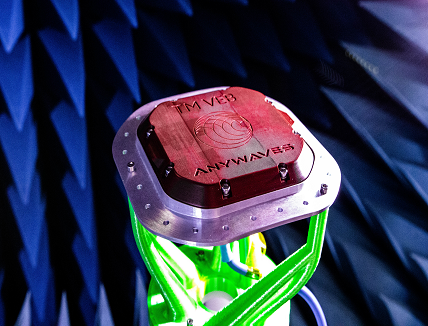
Selected in autumn 2020 to provide specific antennas to CNES for CALLISTO, a demonstrator of reusable launcher first stage developed in partnership with the German and Japanese space agencies (DLR & JAXA), ANYWAVES has now become the
first participant in the project to make flight hardware available. This technological success allows the French space equipment manufacturer to expand its position by addressing a brand-new market: Antennas for Reusable Launchers
For the past 6 years, ANYWAVES has been dedicated to developing innovative antennas that are increasingly being deployed in satellite constellations for major industry players. Whether off-the-shelf or custom-made, all antennas meet the same requirements and successfully undergo a series of mechanical-thermal tests before being deployed in cleanrooms and platforms. In fact, this is what motivated CNES to collaborate with this specialist when it came to developing a completely new antenna model. “The solutions proposed by ANYWAVES perfectly meet our needs as they comply with technical requirements while being off-the-shelf. Their high Technology Readiness Level (TRL) achieved in satellite applications allowed us to consider our specific launcher requirements, thereby minimizing technical risks and costs” announces David Monchaux, Avionics Engineer for CALLISTO. However, new mechanical and thermal constraints had to be considered, not to mention the added responsibility that would weigh on the antennas to be produced.

Flying under extreme conditions
While antennas designed until now comfortably traveled aboard rockets before operating in space, an environment that is not devoid of hostility, those designed for CALLISTO will travel directly on the launcher itself, both on the way to and returning from
the Guiana Space Center.
The traditional thermal tests at +120 / -120°C (+248 / -248°F) are insufficient. The same goes for nominal vibration tests. Here, the stakes are doubled, and the consideration of the environment includes high humidity due to the conditions of French Guiana, as well as the temperature and flames during engine ignition. To meet the expected 360°C (680°F), the ANYWAVES teams have developed a specific thermal shield. David Monchaux comments: “ANYWAVES has been very attentive to our needs and has shown responsiveness and ingenuity to meet our requirements. We particularly appreciated the quick addition of a thermal shield to the selected antenna to withstand the aerothermal environment of the launcher.”
Three different types of antennas for major roles
The first mission entrusted to ANYWAVES antennas is the Telemetry-Telecommand link during flight, which is essential for rocket control and gathering information about its health status. This will be achieved through S-Band TT&C antennas.
The localization of the launcher, allowing for the verification of its position and trajectory, will rely on navigation antennas, known as “GNSS antennas”. This is an extremely important mission, complemented by another set of TT&C antennas for
transmitting data to the ground. If the trajectory data collected by the GNSS indicates deviation from the designated corridor, the backup system will take over to command the destruction of the vehicle.
Additionally, a Wi-Fi antenna for onboard-to-ground communication when the launcher will be either on its launch pad or on the landing zone completes the set of RF equipment to be provided.
Furthermore, as one of the objectives of CALLISTO is to develop and validate the technologies and processes required for future reusable European launchers, test caps will be used to complete the ensemble and facilitate all the necessary tests between
each flight.
After three years of dedicated work, meticulous R&D, and rigorous testing, ANYWAVES has just delivered the very first flight hardware for the CALLISTO program. According to Pascal Tatiossian, Avionics Project Manager for CALLISTO “Undoubtedly, ANYWAVES’ agility and attentiveness have been the pillars that enabled us to obtain the very first CNES-responsible qualified product within the framework of CALLISTO.” The recently provided S-band antennas will soon be joined by their GNSS and Wi-Fi counterparts, with delivery scheduled in the coming weeks. Meanwhile, new models may potentially join other launch pads aboard other reusable launchers.



















